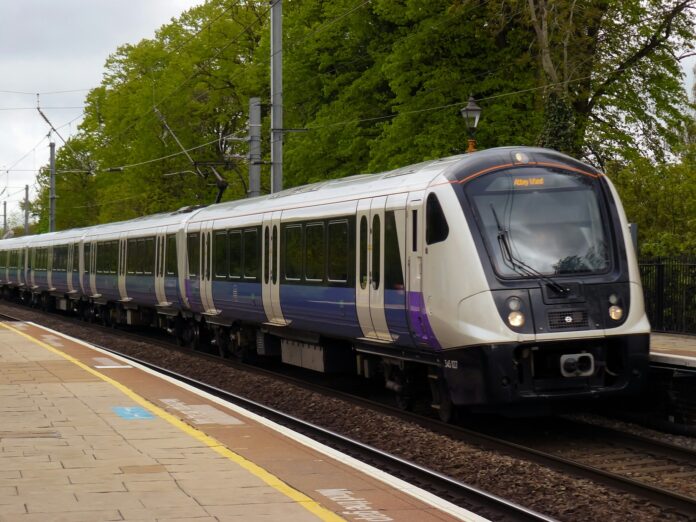The UK’s rail industry is at a turning point. Once regarded as one of the most reliable and innovative transport networks in the world, it is now facing an unprecedented workforce crisis. According to a recent Financial Times report, rail minister Peter Hendy has issued an urgent directive for train operators to “hire more drivers” amid fears of a looming shortfall. His warning follows findings from the NSAR Rail Workforce Survey, which paints a troubling picture of a sector struggling to attract, train, and retain the people it needs. This challenge isn’t restricted to train drivers alone, with the infrastructure side struggling to introduce new staff as well.
The numbers are stark. Britain currently has around 27,000 licensed train drivers, yet up to 40% of freight drivers and 22% of passenger drivers are expected to retire in the next five years. Even today, the network is believed to be around 1,000 drivers short of what is needed to maintain current timetables. The result? Disrupted services, delayed projects, and an industry battling to meet passenger expectations while trying to modernise for the future.
A System Under Strain
The driver shortage is just one symptom of a much larger problem. The NSAR (National Skills Academy for Rail) survey reveals a workforce under significant strain – not only ageing rapidly, but also lacking the influx of young talent required to sustain it. Around 20% of the UK rail workforce is now over 55, and with training programmes taking up to a year to complete, even an aggressive recruitment campaign will take time to bear fruit.
The result is a ticking time bomb. As senior engineers, signal technicians, project managers, and drivers retire, the institutional knowledge that underpins the rail system is disappearing faster than it can be replaced. Meanwhile, delays in training new recruits mean that even newly delivered rolling stock – such as the 90 new trains ordered by South Western – are sitting idle because there aren’t enough qualified drivers to operate them, according to Lord Hendy.
Why Recruitment Is Failing
It’s tempting to blame this crisis on demographics alone, but the challenges run deeper. Recruitment into rail has long been hampered by outdated perceptions of the industry. To many, rail conjures images of heavy manual labour, irregular hours, and low public esteem – an image that fails to reflect the technological sophistication and career stability the sector actually offers.
Moreover, barriers to entry remain high. Prospective train drivers must complete extensive aptitude tests, of which roughly two-thirds fail on their first attempt. While safety and competence must never be compromised, these standards, coupled with lengthy training and limited entry points, deter many candidates who might otherwise thrive in rail careers.
The average age of new recruits – 34 years old – highlights a missed opportunity to engage younger people earlier. Although the government’s decision to lower the minimum driver training age from 20 to 18 is a welcome step, it must be part of a wider effort to make rail appealing to school leavers, apprentices, and graduates.
The NSAR Findings: An Industry at a Crossroads
The NSAR’s 2024 Rail Workforce Survey underscores just how broad this skills gap has become. It identifies shortages not only among drivers, but across engineering, digital signalling, data analysis, and rolling stock maintenance — areas that are essential to delivering the government’s ambitions for Great British Railways (GBR).
Perhaps most worryingly, NSAR’s analysis reveals that awareness of rail as a career option remains low among young people. Only a small fraction of school leavers say they would consider working in rail, compared to industries such as technology, energy, or aviation. That lack of visibility means the industry is often competing for talent with sectors that are more proactive, better marketed, and perceived as more dynamic.
How Can the Industry Turn the Tide?
If the UK rail industry is to secure its future, it must shift from crisis response to long-term workforce planning. That means reimagining how it attracts, trains, and retains people at every level.
1. Make Rail a First-Choice Career
The rail sector needs a national campaign to reshape public perceptions — showcasing the breadth of roles available, from AI-driven traffic management to green infrastructure design. Rail should be seen not just as a place for “drivers and engineers”, but as a cutting-edge industry driving the UK’s sustainability and transport future. Partnerships with schools, STEM programmes, and local apprenticeship hubs can help inspire the next generation.
2. Accelerate Training and Streamline Pathways
With training currently taking around 12 months, there is scope to modernise how drivers and technical staff are trained. Simulation technology, modular learning, and digital testing could speed up the process without compromising safety. Cross-industry collaboration — where existing drivers mentor trainees across franchises — would also help reduce bottlenecks.
3. Embrace Diversity and Inclusion
A more inclusive recruitment approach could dramatically widen the talent pool. Women make up less than 20% of the rail workforce, and ethnic minority representation remains low. Encouraging flexible working, promoting visible role models, and creating return-to-work schemes for people outside the industry could help rail reflect the communities it serves.
4. Leverage the Great British Rail Transition
The government’s move to bring franchises under the Great British Railways (GBR) umbrella offers a once-in-a-generation opportunity to unify recruitment and training. A centralised system could reduce duplication, set national skills standards, and ensure workforce planning aligns with infrastructure and digital transformation goals – but there will be challenges to achieve this.
5. Invest in Skills for the Future
Finally, the rail industry must prepare not just for more staff – but for different skills altogether. The rise of digital signalling, predictive maintenance, and low-carbon rolling stock means demand will increasingly shift toward data, automation, and sustainability expertise. The NSAR has been clear: only through targeted investment in skills will the industry remain competitive and resilient.
A Race Against Time
Peter Hendy’s warning is both timely and necessary. Without decisive action, the UK risks running a rail network with too few people to keep it moving. But this crisis also presents a rare opportunity – to rebuild a workforce that is younger, more diverse, and better equipped for the future.
The trains may still be running, but the tracks ahead are steep. If the industry can seize this moment – using industry insights, government backing, and public interest in sustainable transport – it can turn the tide on recruitment and ensure that Britain’s railways remain the backbone of its economy for generations to come.





